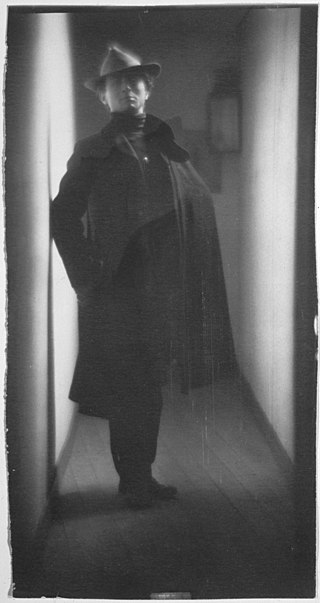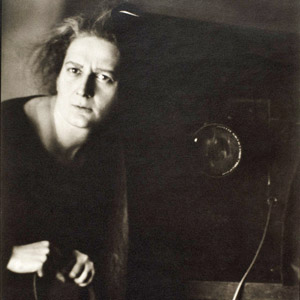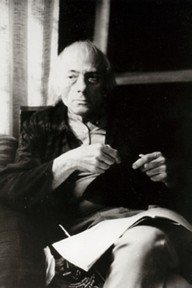Related Research Articles

Edward Jean Steichen was a Luxembourgish American photographer, painter, and curator, renowned as one of the most prolific and influential figures in the history of photography.

Richard Avedon was an American fashion and portrait photographer. He worked for Harper's Bazaar, Vogue and Elle specializing in capturing movement in still pictures of fashion, theater and dance. An obituary published in The New York Times said that "his fashion and portrait photographs helped define America's image of style, beauty and culture for the last half-century".

The Family of Man was an ambitious exhibition of 503 photographs from 68 countries curated by Edward Steichen, the director of the New York City Museum of Modern Art's (MoMA) department of photography. According to Steichen, the exhibition represented the "culmination of his career". The title was taken from a line in a Carl Sandburg poem.
Frank Gohlke is an American landscape photographer. He has been awarded two Guggenheim fellowships, two fellowships from the National Endowment for the Arts, and a Fulbright Scholar Grant. His work is included in numerous permanent collections, including those of Museum of Modern Art, New York; the Metropolitan Museum of Art; and the Art Institute of Chicago.

Laura Gilpin was an American photographer.

LotteJacobi was a leading American portrait photographer and photojournalist, known for her high-contrast black-and-white portrait photography, characterized by intimate, sometimes dramatic, sometimes idiosyncratic and often definitive humanist depictions of both ordinary people in the United States and Europe and some of the most important artists, thinkers and activists of the 20th century.

Esther Bubley was an American photographer who specialized in expressive photos of ordinary people in everyday lives. She worked for several agencies of the American government and her work also featured in several news and photographic magazines.
Linda Connor is an American photographer living in San Francisco, California. She is known for her landscape photography.

George A. Tice is an American photographer. His work depicts a broad range of American life, landscape, and urban environment, mostly photographed in his native New Jersey. He has lived all his life in New Jersey, except for his service in the U.S. Navy, a brief period in California, a fellowship in the United Kingdom, and summer workshops in Maine, where he taught at the Maine Photographic Workshops, now the Maine Media Workshops.
Marie Cosindas was an American photographer. She was best known for her evocative still lifes and color portraits. Her use of color photography in her work distinguished her from other photographers in the 1960s and 1970s. Most of her photographs were portraits and pictures of objects like dolls, flowers, and masks.

Louis Faurer was an American candid or street photographer. He was a quiet artist who never achieved the broad public recognition that his best-known contemporaries did; however, the significance and caliber of his work were lauded by insiders, among them Robert Frank, William Eggleston, and Edward Steichen, who included his work in the Museum of Modern Art exhibitions In and Out of Focus (1948) and The Family of Man (1955).

Emma Barton (1872–1938) was an English portrait photographer.

Todd Webb was an American photographer notable for documenting everyday life and architecture in cities such as New York City, Paris as well as from the American west. He traveled extensively during his long life and had important friendships with artists such as Berenice Abbott, Walker Evans, Alfred Stieglitz, Georgia O'Keeffe, Ansel Adams, Dorothea Lange, and Harry Callahan.

Reva Brooks was a Canadian photographer who did much of her work in and around San Miguel de Allende in Mexico. The San Francisco Museum of Art chose Reva Brooks as one of the top 50 women photographers in history.

Éva Besnyő was a Dutch-Hungarian photographer who participated in the Nieuwe Fotografie movement.

Carlotta Corpron was an American photographer known for her abstract compositions featuring light and reflections, made mostly during the 1940s and 1950s. She is considered a pioneer of American abstract photography and a key figure in Bauhaus-influenced photography in Texas.
Margaretta Mitchell is an American photographer and writer who lives in Berkeley, California. As a photographer, she is known for her portraits and still lifes. She has authored art criticism, biographies of women artists, and photographic histories.
Caroline Hebbe was a Swedish art photographer active in the 1950s-1970s and working in a subjective style in affinity with the Fotoform movement. She later became an international curator of Swedish arts, crafts and design.
Victor Laredo (1910–2003) was an American documentary photographer and author. His black and white photographs of New York City were the subject of the books New York: People and Places (1964), New York City: A Photographic Portrait, and Central Park: A Photographic Guide. Laredo's architectural photographs were published in Life Magazine and became a fourth book entitled Sephardic Spain, written by Laredo and including the architectural photographs.
Nancy Lee Katz was an American photographer. Katz "dedicated a period of 25 years to a private project of photographing people, mainly in the arts, whose work she respected. She kept the pictures to herself, never offering them for sale, or for exhibit, or for publication."
References
- ↑ Mitchell, Margaretta & Abbott, Berenice, 1898–1991 (1979). Recollections : ten women of photography. Viking Press, New York
- ↑ Lillian Gish & Pinchot, Ann (1969). Lillian Gish the movies, Mr. Griffith, and me. Englewood Cliffs, N.J Prentice-Hall
- ↑ Peterson, Christian A & Minneapolis Institute of Arts (1997). After the photo-secession : American pictorial photography, 1910–1955 (1st ed). Minneapolis Institute of Arts in association with W.W. Norton, New York, [Minneapolis, Minn.]
- ↑ Phillips, M. (1987). The family album: an extended portrait. Chicago.
- ↑ The Christian Century, Volume 71, Part 2, Page 1168
- ↑ Dorr, Nell (1893–1988) Barbara Tenery Collection of Nell Dorr Papers (1919–1986, bulk 1960s). Amon Carter Museum of American Art Archives.
- ↑ A first-edition copy of which (Harper & Row, 1954) sold on 19 May 2010 for £400 http://www.dreweatts.com/cms/pages/lot/NY047/478
- ↑ Dorr, N. Popular Photography, May 1955, 88
- ↑ "Shahn was not the only photographer who defended...The Family of Man. Nell Dorr, whose work also appeared in the show, responded to another condemnatory letter published the May 1955 issue of Popular Photography in which a reader accused Steichen of personal flag-waving. Arguing that human beings are a biological family but differ tremendously in social, moral, and ethical values, the reader found the concept of the show "rather trite', based on ignorance, if not a lie" (Ringel 1955, 6). Commenting that Steichen's own work was hardly featured in the show, Dorr suggested that photographic exhibits ought to depict and stand for something more important than just a "Who's Who in Photography." "We love, we hate and we fear," she noted. "We all are born, we suffer, and we die, and within that compass, we all must walk. Doesn't the Family of man stress those points? Doesn't it bring the world a little closer?"". Bonnie Brennen, Hanno Hardt (eds.) (1999) Picturing the Past: Media, History, and Photography:The history of communication. University of Illinois Press ISBN 025206769X, 9780252067693. Page 219
- ↑ Interview by Dan Kane with Alexandra Nicholis, curator of the Massillon Museum 2010 exhibition of Dorr's work. http://www.cantonrep.com/article/20101203/News/312039827/?Start=1#sthash.KDlYoIQi.dpuf
- ↑ "America's outstanding dance attraction!: Graff Ballet with Grace and Kurt Graff :: Traveling Culture - Circuit Chautauqua in the Twentieth Century". digital.lib.uiowa.edu. Retrieved 2018-10-04.
- ↑ Stump, Julie (2008-11-15). The Golden Key: Enter the Fantasy World of Tasha Tudor.(Brief article)(Video recording review). In Library Journal. 133 (19), 46(1).
- 1 2 3 "Nell Dorr | MoMA". www.moma.org. Retrieved 2018-05-24.
- ↑ "The Family of Man | MoMA". www.moma.org. Retrieved 2018-05-24.
- ↑ "Recent Acquisitions | MoMA". www.moma.org. Retrieved 2018-05-24.
- ↑ "Art in a Changing World: 1884–1964: Edward Steichen Photography Center | MoMA". www.moma.org. Retrieved 2018-05-24.
- ↑ Black, J. B. (1981). Mother/photographers (Doctoral dissertation, Massachusetts Institute of Technology).
- ↑ Cutshaw, S. M. (2010). Framing the Familial in the Photography of Imogen Cunningham, Nell Dorr, and Sally Mann (Doctoral dissertation, Boston University).
- ↑ "ACM". www.cartermuseum.org. Archived from the original on 2018-06-23. Retrieved 2018-05-24.
- ↑ "Amon Carter Museum of Art Exhibition History" (PDF). Archived from the original (PDF) on 2017-02-16. Retrieved 2018-05-24.
- ↑ "Between Two Worlds: The Photography of Nell Dorr". Litchfield County Times. 22 April 2015. Retrieved 2020-04-16.
- ↑ Dorr, Nell (1939). In a blue moon. G. P. Putnam's sons, New York
- ↑ Rule, A. (1994). Archives of American women photographers. History of Photography, 18(3), 244-247.